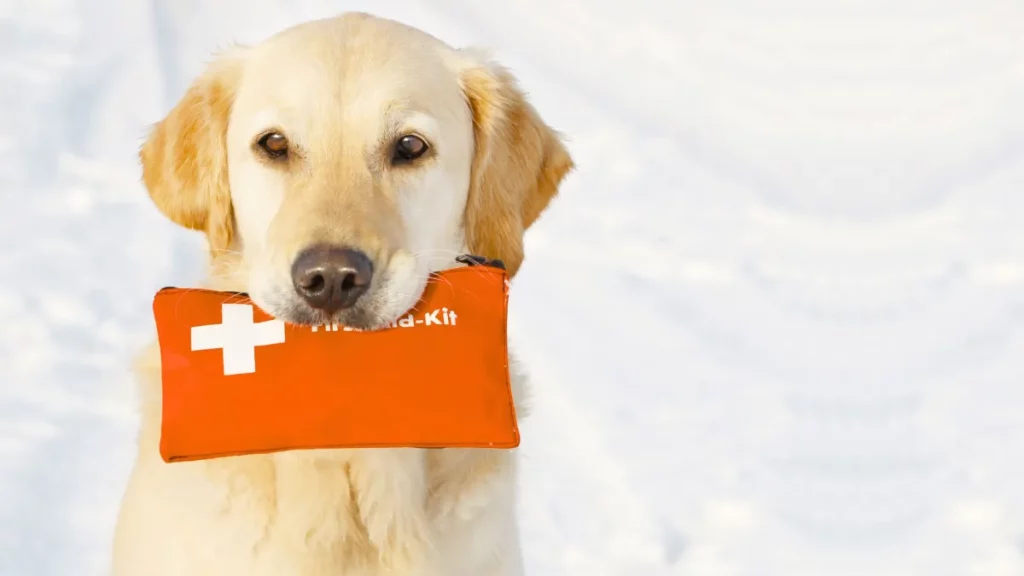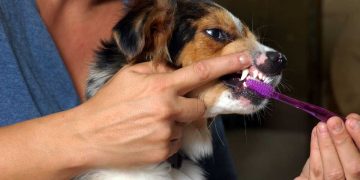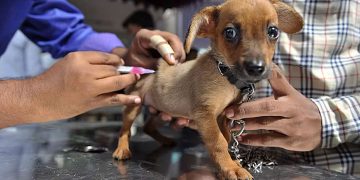Pets are an essential part of the family, and as pet owners, it’s our responsibility to ensure they stay safe and healthy. However, accidents and emergencies can happen at any time, and being prepared to provide first aid can make all the difference in your pet’s well-being. This guide covers the basics of pet first aid, from handling cuts and bites to addressing allergic reactions and more. With this knowledge, you’ll be better equipped to keep your furry friend safe in emergencies.
1. Understanding Basic Pet First Aid
First aid for pets involves providing immediate medical care to your animal in times of injury or sudden illness. While first aid is not a substitute for professional veterinary care, it can stabilize your pet until you can get them to the vet or an emergency clinic. Having a first aid kit, knowing basic techniques, and understanding how to react in emergencies can save your pet’s life.
1.1. Why Pet First Aid Matters
Just like with humans, immediate care can prevent injuries from worsening and can sometimes save a life. Whether your pet has been injured or is experiencing a sudden illness, timely intervention can make a big difference. First aid is particularly important because pets can’t communicate their pain or symptoms in the same way humans can, making it essential for owners to be proactive.
2. Creating a Pet First Aid Kit
One of the first steps to being prepared for an emergency is having a well-stocked first aid kit. A basic first aid kit for pets should include items that are versatile and can be used in a wide variety of emergency situations. Here’s a list of essential supplies to include in your pet’s first aid kit:
2.1. Essential Items for Your Pet First Aid Kit
- Sterile gauze pads and bandages: For cleaning and dressing wounds.
- Adhesive tape: To secure bandages or gauze.
- Tweezers: For removing splinters, ticks, or other foreign objects.
- Antiseptic wipes or solution: For disinfecting cuts, bites, or scrapes.
- Cotton balls and swabs: For gentle cleaning or applying ointments.
- Digital thermometer: To measure your pet’s body temperature.
- Disposable gloves: To protect yourself while handling injuries.
- Hydrogen peroxide: For inducing vomiting in certain cases (only under vet guidance).
- Eye wash or saline solution: For cleaning out irritants in the eyes.
- Pet-safe pain relievers (under vet guidance): For temporary relief in emergency situations.
- Emergency contact numbers: Including your vet’s number, local animal hospital, and an emergency pet poison hotline.
- Pet first aid manual: A guide to help with common emergency situations.
2.2. Where to Store Your Pet’s First Aid Kit
Store your pet’s first aid kit in a place that is easily accessible, but out of reach of pets or children. It should be stored in a waterproof container and checked regularly to ensure supplies are not expired or used up.
3. Handling Cuts and Scrapes
Accidents such as scratches or cuts are common, especially for active pets. Knowing how to properly treat these injuries can reduce the risk of infection and speed up healing.
3.1. How to Treat Minor Cuts and Scrapes
- Clean the wound: Gently clean the affected area with lukewarm water or an antiseptic wipe. Avoid using hydrogen peroxide directly on the wound, as it can delay healing.
- Stop the bleeding: Apply pressure with sterile gauze or a clean cloth to stop any bleeding. If the bleeding is severe and doesn’t stop after several minutes, take your pet to the vet immediately.
- Apply a bandage: After cleaning the wound and stopping the bleeding, cover the area with a sterile bandage to protect it from dirt and bacteria. Secure the bandage with medical tape, making sure it’s not too tight.
- Monitor the wound: Keep an eye on the injury for signs of infection, such as redness, swelling, or pus. If you notice any of these, contact your vet.
3.2. When to Seek Veterinary Care
If the cut is deep, the bleeding won’t stop, or the wound is in a sensitive area (like near the eyes or joints), seek immediate veterinary care. Also, if you suspect the injury might be a result of a bite or other trauma, don’t hesitate to take your pet to the vet.

4. Dealing with Bites and Stings
Pets are curious by nature and may get bitten or stung by other animals or insects. Understanding how to handle these situations will help minimize the pain and prevent further complications.
4.1. What to Do if Your Pet Gets Bitten by Another Animal
- Assess the bite: Animal bites can be deep and may introduce bacteria, leading to infection. If the wound is not severe, you can clean it with antiseptic and apply a bandage.
- Keep your pet calm: A scared or stressed pet may worsen their injury or try to escape. Speak softly and handle your pet gently to reduce anxiety.
- Seek veterinary care: Animal bites can result in infections, even if the bite doesn’t seem very severe. A vet will clean the wound thoroughly and may provide antibiotics or pain relief.
4.2. What to Do if Your Pet Is Stung by a Bee or Wasps
- Remove the stinger: If your pet has been stung by a bee, carefully scrape the stinger off with a blunt object like a credit card. Avoid using tweezers, as this can squeeze more venom into the wound.
- Cool the area: Apply a cold compress to the affected area to reduce swelling.
- Watch for signs of an allergic reaction: Symptoms like swelling around the face, difficulty breathing, vomiting, or lethargy require immediate veterinary attention.
5. Handling Allergic Reactions
Pets can have allergic reactions to foods, medications, insect bites, or environmental factors. Some allergic reactions can be life-threatening, so it’s essential to recognize the signs and act quickly.
5.1. Signs of an Allergic Reaction
- Swelling: Especially around the face, ears, and eyes.
- Itching: Persistent scratching, licking, or biting at the skin.
- Hives: Raised, red bumps on the skin.
- Breathing difficulty: Wheezing or labored breathing.
- Vomiting or diarrhea: Gastrointestinal upset may indicate an allergy.
5.2. What to Do in Case of an Allergic Reaction
- Call your vet immediately: If you notice signs of an allergic reaction, contact your veterinarian or an emergency animal clinic.
- Administer medication (under vet’s guidance): If your vet has previously prescribed antihistamines or other medications for your pet’s allergies, administer them as directed.
- Monitor your pet closely: If your pet is struggling to breathe or appears to be in severe distress, seek immediate veterinary care. Do not attempt to administer over-the-counter human medications without veterinary approval.
6. Recognizing and Responding to Poisoning
Pets are often curious and may ingest substances that are harmful to them. From household chemicals to plants and foods, recognizing poisoning early can save your pet’s life.
6.1. Signs of Poisoning
- Vomiting or diarrhea: Often, the first sign of poisoning.
- Excessive drooling: A result of nausea or poisoning.
- Seizures or tremors: Some poisons affect the nervous system.
- Lethargy or weakness: Poisoned pets may appear unusually tired or uncoordinated.
- Breathing difficulty: Labored or irregular breathing can indicate poisoning.
6.2. What to Do If You Suspect Poisoning
- Contact a pet poison hotline: Call your vet or a pet poison hotline immediately for guidance.
- Induce vomiting (if advised): If instructed by your vet, you can use hydrogen peroxide (3%) to induce vomiting. Never attempt this without professional guidance, as vomiting may be dangerous depending on the type of poison.
- Take your pet to the vet: If you suspect poisoning, it’s crucial to get your pet to a veterinary clinic or emergency animal hospital as quickly as possible.
7. When to Seek Professional Veterinary Care
While you can handle many pet emergencies with basic first aid, certain situations require immediate professional care. Always err on the side of caution if you’re unsure about how severe the injury or illness is.
Seek professional care if:
- Your pet’s injury is severe or does not improve.
- They are experiencing difficulty breathing, seizures, or loss of consciousness.
- You suspect poisoning or an allergic reaction.
- The wound appears deep, infected, or involves sensitive areas (like eyes, joints, or face).
8. Final Thoughts
As a pet owner, being prepared for emergencies is essential. Having a first aid kit, knowing how to handle basic injuries, and recognizing the signs of more serious conditions can make all the difference in your pet’s health. Remember, first aid is meant to stabilize your pet until you can seek professional veterinary care. Always follow up with your veterinarian for a full evaluation after administering first aid.
By being informed and prepared, you can confidently provide your pet with the care they need in emergency situations, ensuring their safety and well-being.
























































